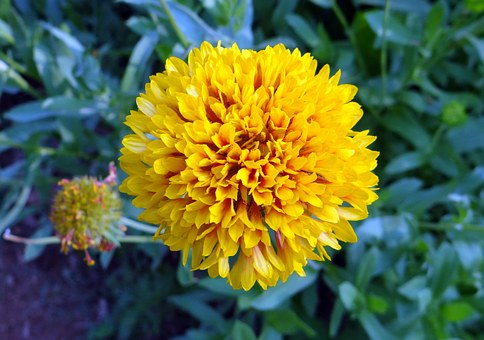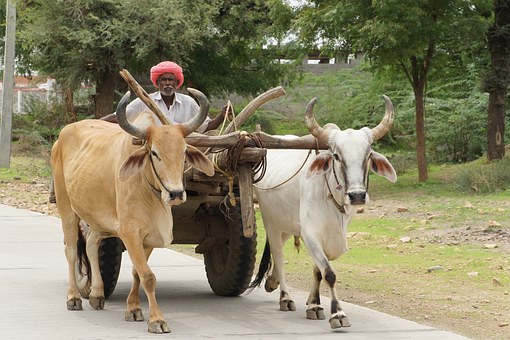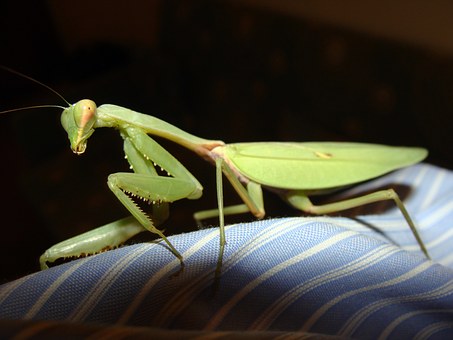Bikaner, the camel country

Bikaner, the camel country
Bikaner, the camel countryBikaner is known for its old and majestic Havelis. Bika, one of the fourteen sons of Rao Jodha, founded it in 1486. This city lying in the north of the desert state is dotted with sand dunes. It is popularly called the camel country; Bikaner is renowned for the best riding camels in the world. You may enjoy camel safaris; sights of historical forts and scores of rats at Karni Mata temple. The camel festival at Bikaner is held every year in January that is the worth witnessing event of the city. This city also has the largest Camel research and breeding farm in the world. Camel, the ship of the desert is an inseparable part of life here. The camels are used for transportation and other odd jobs in this city. It is the royal fortified city with a timeless appeal.
The history of Bikaner dates back to 1488 when a Rathore prince, Rao Bikaji founded his kingdom. Bikaji was one the five sons of Rao Jodhaji, the founder of Jodhpur. It is said that an insensitive remark from his father about his whispering in the royal court provoked Bikaji to set up his own kingdom. The barren wilderness called Jangladesh became the focus point and transformed it to an impressive city by Rao Bika. He constructed this city with the help of 100 cavalry horses and 500 soldiers. The Bikaner kingdom was established with 84 abandoned villages that were flourished with over 3000 villages in 1504 at the time of death of its promoter Rao Bikaji.

Present day Bikaner is the result of the clairvoyance of its most eminent ruler Maharaja Ganga Singh (1887-1943) whose reformative zeal set the pace for Bikaner transformation from a principality to a premier princely state. The strategic location of Bikaner on the ancient caravan routes that came from west and central Asia made it a prime trade centers in that period. This city stands at an elevation enclosed by stonewalls with five massive gates. The most important fort is the Junagarh Fort that consists 37 pavillions; balconies and windows to add grace the fort. The most exquisite palaces are Anup Mahal, Badal Mahal and Lallgarh Palace.
BIKANER SIGHTSEEING PLACES
There are number of sightseeing places in Bikaner. Some of the most important places as follows
Gajner Palace, Bikaner: Gajner is an incomparable Jewel in the Thar. It was built by the king Ganga Singh of Bikaner on the embankment of a lake with a generous dose of flora and fauna. Basically a hunting and relaxing lodge, the king and his family shared their exotic holidays and passion with important guests.
Junagarh Fort: It was an unassailable fortress, which has never been conquered. It was constructed in 1593 A.D by king Rai Singh, one of the most distinguished generals in the army of Emperor Akbar, the fort is a formidable structure encircled by a moat. The main entrance to the fort is Karan Pol that is east facing. Next to it is the Suraj Pol meaning the sun gate. The fort situates in it some very magnificent palaces like Anup Mahal, Ganga Niwas and Rang Mahal etc. The Har Mandir is the majestic chapel for the royal family for worshipping their gods and goddesses. These palaces, constructed in red sandstone and marble, make a picturesque ensemble of courtyards, balconies, kiosks and windows dotted all over the structure. The premises also house a museum, which is an array of a rich collection.
The Junagarh palace: It is located within the fort is an elegant structure, which was later modified and added to by successive rulers. It was built with red sandstone and marble. In the mid 18th century Gaj Singh contributed the Chandra Mahal (Palace of the Moon) with its mirrors, carved panels and paintings and Phool Mahal (Palace of Flowers) with its flower motifs inlaid with mirrors. Less affected by war and destruction, they could concentrate more on the arts and the famous Bikaner school of painting flourished. Several artifacts and the decorations in the king's bedrooms are still intact, revealing their love for art and beauty. An arched doorway leads to the Joramal temple. Tar Mandir is the royal chapel where royal weddings and births were solemnized.
Lal Garh Palace: This grand palace is an architectural masterwork in red sandstone that was built by king Ganga Singh in the memory of his father in 1902. Sir Swinton Jacob designed this palace. The architecture of this palace is the amalgamation of Rajput, Mughal and European architecture. The exterior contrasts dramatically with the oriental interiors and amenities. The palace has beautiful latticework and filigree work, which are hallmarks of a great craftsmanship. The Palace has an amazing collection of well-maintained paintings and hunting trophies. At present it houses a museum known as Shri Sadul Museum and also part of it functions as a hotel. The Ganga Golden Jubilee Museum houses artifacts from various eras dates back to pre Harappan civilizations, the Gupta and Kushan periods, terra-cotta wares, weapons, miniature paintings and coins.
The Anup Mahal: It was built by Surat Singh is an even more beautiful and graceful palace with wonderful carvings in red sandstone on the walls and ceilings. Anup mahal, Rang Mahal and Bijay Mahal have slender massive columns, cusped arches and delicate screens.
Bikaner Havelis: The havelis were the residence of wealthy merchants who had a fancy for beauty and art. They used to live far off lands to earn money and then return to the haveli to rest and enjoy. The oldest haveli is 400 years old but most of them are 100 years old approximately. These are known for opulent life style, intricate carvings, craftsmanship and sprawling courtyards. Bikaner has number of such havelis. The most famous cluster of havelies is the Rampuria Group of Havelies. The most beautiful carvings with unparallel artistic exteriors are Rikhji Bagri ki Haveli that is situated near mohta chowk. Other notable havelies are the great patwa havelies and Daga chowk havelies etc.
Camel Breeding Farm: The Indian Council of Agriculture Research (ICAR) has established National Research Center on Camel (NRCC) at Jorbeer. It is located 8 kms from Bikaner. It came into existence on 5th July 1984. This government-managed farm is unique and largest in Asia. There are hundreds of camels present in this farm. The British army had camel corps drawn from Bikaner during World War I. The tourists can enjoy a camel ride and taste camel milk. Another visiting place is Devi Kund that is situated 8 kms away from breeding farm is the royal crematorium and memorials of Rathores. The Gajner Wildlife Sancturay lies 32 kms on the Jaisalmer road.
Prachina Museum, Bikaner: It is an effort to highlight the aristocratic patronage, which thrived and survived in Bikaner. This museum hopes to build and develop a cultural center to revive the dying craft of Bikaner and amalgamate it to present life. Keeping with the rich and glorious past of Bikaner, daughter of king Narendra Singh has opened a museum "Prachina" in 2000.
Devi Kund Sagar (Royal Cenotaphs): It is situated 8 km in the east of city. The members of ruling family of Bikaner subsequent to Jet Singh, the great grandson of Rao Bikaji, have been cremated here. On the sides of reservoir of water lie the Royal cenotaphs of rulers of Bikaner dynasty from Rao Kalyan Singh to last Maharaji Karni Singh as well as those of their wives and other important members of family.
Karni Devi Temple / Deshnok: It is a small village situated 32 km south from Bikaner city along the Jodhpur Road. It is connected by national highway and rail. It is a pilgrim center known as Karni Mata Temple also. It is believed that Karni Mata the incarnation of Goddess Durga lived here in the 14th century. The Durga temple is finely sculpted and has massive intricately carved silver gates, which were donated by Maharaja Ganga Singh. The temple provides sanctuary to rats. The rats' scamper freely round the temple and devotees feed them.
Bhandeswari Jain Temple: It is a 15th century building and is the oldest monument of Bikaner. This temple is decorated with rich mirror work, frescoes and gold leaf paintings.
Lakshmi Nath Temple: It is one of the oldest temples of Bikaner. Rao Bikaji laid the foundation of Bikaner here in the year 1488 A.D. It is a historical monument has special identity. This temple was erected during the reign of Rao Lunkaran and boasts of the superb archeological skills of artists and artisans. Maharaja Ganga Singh later developed it. There are statues of deities- Vishnu and Laxmi.
Shivbari Temple: Dungar Singhji built it in the late 19th century. An embattlement wall surrounds the temple. It has four-faced black marble Shiva statue and a bronze Nandi facing the Shiva-Lingam. There are two large reservoirs of water known as baoris. This red sandstone temple attracts thousands of visitors during Shravan (February) especially on Mondays.
Kapil Muni Temple: It is located 47 kms south west of Bikaner built in the honor of saint Kapil. The Kolayat Lake is considered sacred and pilgrims gather during Kartik Purnima (full moon day) in the months of October and November to take a holy dip in the lake. A camel, cattle auction also takes place similar to the Pushkar fair.
Camel Safari: Bikaner is regarded as camel country due the abundance of camel in this region. The camel may look aloof but it's the lifeline for the people of the desert whose communication needs depends on this vital beast for their survival. Most journeys to the hinterlands are still made on camel back. Camel safaris can range from just a day to several days, and you can choose an option that best meets your needs and schedules. Most such safaris can traverse a distance of 30-40 kms a day.
CAMEL SAFARI TIPS: Bikaner city provides the best safari points in the region. Tourists are recommended to dress modestly since the safari may pass and camp in close proximity of villages. A sola-topee, the local turban or some form of hat protection is essential, and people are advised that they should drink water at regular intervals.
HOW TO REACH BIKANER
Bikaner is well connected to the major cities in India. There are various modes of transportation are available as follows

By Air: Jodhpur is the nearest Airport. Jaipur, the capital of Rajasthan is well connected by regular flights from all the metro cities of India as Delhi, Mumbai, Kolkata and Chennai.
By Rail: A good rail network connects Bikaner to other important cities like Delhi, Kolkata, Jaipur and Allahabad. The "Palace on Wheels" a tourist luxury train also covers Bikaner in its eight-day tour of Rajasthan.
By Road: Bikaner is connected by wide road network with the major cities in India. National and State Highways link Bikaner with the other cities in India. Delhi is 456 kms, Jaipur 334 kms and Jaisalmer 333 kms away from Bikaner.
http://www.articlesbase.com/destinations-articles/bikaner-the-camel-country-3575500.html Exciting Denver day Trips!!! Niagara Falls shuttle service - what traveling is really about Meanings of West African Masks Diwali SMS 2010, Deepavali Greetings, Diwali Festival Thrilling Rajasthan Tours – Where Good Times Begin The Different Types of Timber Decking Available Today Rajasthan Tour Packages – The Ultimate in Luxury and Entertainment Exciting Indonesia Tourism!!! Enjoy Hen Weekend with Hen Night Ideas London Kerala Tourism: Eravikulam National Park Tour Salmonella on holiday Golden Triangle Tour with Haridwar South india kerala tour